It was a crisp fall day when I first saw her, a tiny sorrel overo filly romping with her bigger, blue roan brother. They bucked and reared together in the cool shadow of a large clay butte that kept the sunshine from reaching the river valley. Life was carefree for the two foals running through the tall green grass on the bank of the Little Missouri. The sun was still warm and the grass was still plentiful on that October morning, but the days were getting short and winter was not far away. God did not intend to have foals born in October; most of them were born in the spring or in the warm days of summer, but this little filly, with the big splashes of white on her sides and over her face and the promise of a flaxen mane fluttering in curly wisps down her neck, was less than a week old. She had no way of knowing of the brutal temperatures and relentless winds that would pummel the North Dakota prairie in just a few weeks. Those winds can barrel through the canyons like freight trains, freezing everything in their way. They freeze the river and water holes and bring snow that wets the hide and covers the rich grasses making every bite a chore. I wondered, would the newborn filly make it through a harsh North Dakota winter? I didn't see her that winter, so I could only guess about the safety of the filly and the two other late foals born that fall. I hoped that the snow would not be too deep and the temperatures not too severe.
The following spring I was anxious to check on the horses to see if all had survived. The winter had taken it's toll, but the cute overo filly was still with the L band, lounging in the protection of the great cottonwoods along the Little Missouri. The L band had a bad reputation for being pests in the park because of the home they had chosen. They found shelter in the brush and cottonwoods along the river bank where the wind didn't reach them in winter and the sun didn't scorch them in summer. They also found that the mowed grass of Cottonwood Campground was tender and green. They didn't mind that the lush grass was sometimes covered with a tent or a camper; they could share their home with visitors. What made them unwelcome was their discovery that the Redwood benches and signs in the campground were quite tasty. Being horses, they got bored once in a while and would find something to do that satisfied their chewing habit and tasted good too. The Park personnel had tried to run them out of the campground and even to capture them and send them away, but to no avail.
That spring the Park Superintendent, Valerie Naylor, contacted a low-stress livestock handler to teach the Park personnel some more effective ways to deal with animals who had escaped the park or the horses, whose numbers had made it necessary to sell some off so that vegetation in the Park would not be overgrazed. Whit Hibbard is a Montana rancher, who has learned the low-stress methods of Bud Williams and has used those methods successfully on his ranch and to capture trespass animals that have come across the Rio Grande into Big Bend National Park in Texas. Whit states that, "if done properly, low-stress livestock handling is more cost-effective and efficient, ethical and humane, and safer and easier for both people and animals than traditional livestock handling."
In early May Whit came to the Park and gave a seminar on low-stress livestock handling. Valerie graciously invited us to attend. The method uses many of the principles I was familiar with in natural horsemanship but on a much larger scale. Whit showed video of Bud separating and penning bull Elk and Reindeer as well as domestic livestock. He explained how one or two people could round up, pen, and load animals that would scatter with traditional methods. I found the methods fascinating and practical, but would they work with the wild feral horses of Teddy Roosevelt Park?
Whit had invited me to ride along with him the following day when he went to work with the L Band. All attempts to remove them from the area of the campground had failed, so he wanted to see if his methods might work. I showed up with a dressage horse, a dressage saddle, breeches, helmet, and a bitless bridle, but Whit wasn't quick to judge, he just asked, "Do you ever ride western?"
The river was raging from the rains that had been soaking the region for the past several days, so we loaded my horse and one of the Park's horses, that Whit was going to ride, into my trailer and drove to the other side of the river. We rode through the sheep pen, a sixty acre pen in the southwest corner of the park, that would be our destination if we were able to get directed movement from the horses. Just across from the campground, in a stand of young cottonwoods, we found the L Band.
Delicious was the band stallion of the L Band, having gotten his name because of what he would be in the frying pan of the trail riding concession providers if he didn't quit jumping in with their trail horses. His lead mare, Georgia, and three of the other mares were daughters of Curious George. He also had a nice blue mare that had been one of those to escape the storm and the roundup in 2003 by going across the river. There were 10 horses in all, four mares, two with new foals by their sides, a 2006 colt, a 2007 spring colt, and the little sorrel overo filly born in October.
Whit emphasized to me that the initial contact with the animals was of greatest importance; success or failure may be determined with the the animals' first sighting of an intruder. Since horses are prey animals, they are always ready to run if they think they are threatened. These horses had seen riders coming and going from the trial ride concession at Peaceful Valley Ranch, so they were not too concerned with us as long as we stayed at a distance. Whit asked me to shadow him and his horse since the horses would be less alarmed with seeing fewer riders. We approached them in a zig-zag pattern being careful not to penetrate too far into their flight zone, the distance at which they would feel threatened and run. Watching the most sensitive mare, Whit would move in and out of the flight zone on his passes by the band to get them used to us being there. I kept my gelding behind and beside Whit's so that they moved as one. Once the band was familiar with us and accepted our presence, it was not hard to put gentle pressure on them to push them in the direction we wanted them to go. With the river on one side and the high bluffs on the other, the horses slowly headed up the river bottom toward the sheep pen with Whit and me riding slightly behind and to the side of the band. Whit shared that he treated the band of ten horses like one horse, putting gentle pressure on one side toward the rear to encourage them to go forward or moving up toward the front to turn them. Once we separated to guide from both sides, but the horses were so accustomed to having us move as one that it frightened them and they ran for a ways toward the river. Patiently Whit repeated his zig-zag aproach and continued the slow progress toward the sheep pen. Within two hours we had the horses in the pen; we looked at one another and asked."What do we do with them now?"
We had been given radios, so Whit called in and, I am very sure, the winding down of that Friday afternoon took an abrupt U turn, and Park employees who were still in the office jumped to the task of finding panels and a trailer and developing a plan for 10 horses they really didn't think they would be dealing with in such a short time. While Whit and I practiced moving the horses through the corner of the sheep pen where a small pen would be built, Mike Oelher, Park Biologist, located and brought ordinary ranch panels and built a pen about 30 by 60 feet. Using the natural terrain, we were able to move the horse toward the corner into the pen and close the gate before they knew they were caught. Although the pen was small and not very high, the horses accepted it because they had not been frightened.
The next morning was loading time. Whit stood outside the pen to get the horse used to seeing him on foot and gradually worked his way into the pen. Before he even entered the pen, he had the blue yearling colt comfortable enough to come smell his hand. Once the horses were used to having someone in the pen with them, they were sorted into family groups and loaded into an ordinary stock trailer. What I found amazing was that, once the horses were ready to load, they stepped in and stood quietly. It took about and hour and 45 minutes to load the ten horses in two separate loads. The horses would be be held at the handling facility until Monday when they would be transported to the sales barn.
Only then could Whit and I revel in what had just happened. Wild feral horses had just been taken from the Park quietly, calmly, and safely; it had never happened before in the history of the Park. As we dismantled the panel pen, I put a tempting idea into Whit's head; I told him he should buy the blue colt, since he had it half gentled already. It took less than five minutes for the idea to take hold. What a unique opportunity, to own and train a horse that he had brought in from the wild.
Monday morning Whit wanted to give some Park employees the opportunity to work with the horses, but not until they had been brought through the long alleyway from the lower catch pen to the tub. This was the very task which had been so dangerous with the helicopter 6 months earlier, but with just Whit and I on horseback and anyone else watching from afar, the band walked quietly up the ally and into the tub. Whit loaded a family of three and had Mike load the next family. The stallion and the mare with the late filly were next. With my heart in my throat and a few wise words from Whit, I was able to load them onto a noisy aluminum trailer and send them on to a new chapter in their lives. It was bitter sweet because I did not know where they would end up.
The sales barn in Dickinson was a noisy place with horses huddling in pens and local ranchers sizing them up, but the wild horses took it all in without showing much fear. They had been handled with kindness so far; I could only hope they would find kindness in their future. When Whit arrived, we talked a little strategy and the sale began. Whit's colt was the second to come into the ring. He was the most popular one of the band because of his beautiful color and his age. I was afraid Whit would miss out on the bidding, and gave him a little nudge in the ribs. I would have bid for him, I was so excited for him to get the colt. In less than five minutes the colt was his. The colt could find no better home and Whit had a horse that would always be special to him. None of the other horses brought as much, but none were bought by the kill buyers.
The last to come through the ring was the little filly. Her eyes were huge with fright, but she didn't get crazy; she handled herself well, trusting that in this loud crowded place, no one would hurt her. The auctioneer wasn't getting a bid. Didn't anyone want to take home this cute little filly? OK, plan B went into effect; the auctioneer lowered the bid and I raised my hand. I had just purchased the filly I had watched play that cold October morning, worried about though the long cold winter, helped bring in from the bank of the Little Missouri, loaded onto a trailer with her sire and dam, and determined would not go to kill on my watch!
Whit named his colt Teddy, fitting for a brave young horse born wild in Teddy Roosevelt National Park. He lives in Montana now and Whit can't wait to ride him out with the other ranchers and have them admire that strong young horse with the dark blue coat. The cute overo filly lives with a Saddlebred gelding she thinks is papa, and a 17 hand dressage horse. Her name is Whisper because she was whispered from the park, not roared. She may look like any other spotted filly, but she was one of the first to be born in the wild and be literally walked off the Park in a low-stress roundup. She doesn't know, nor does she care, but she was a part of history.
I had to interrupt my introduction of the bands with Whisper's story because Whit is coming back to the Park. Will he be successful? We don't know, but we can hope that in the future horses can be brought in without danger and stress and in smaller numbers so that they too, like Teddy and Whisper, can find good homes and live purposeful lives.
Subscribe to:
Post Comments (Atom)


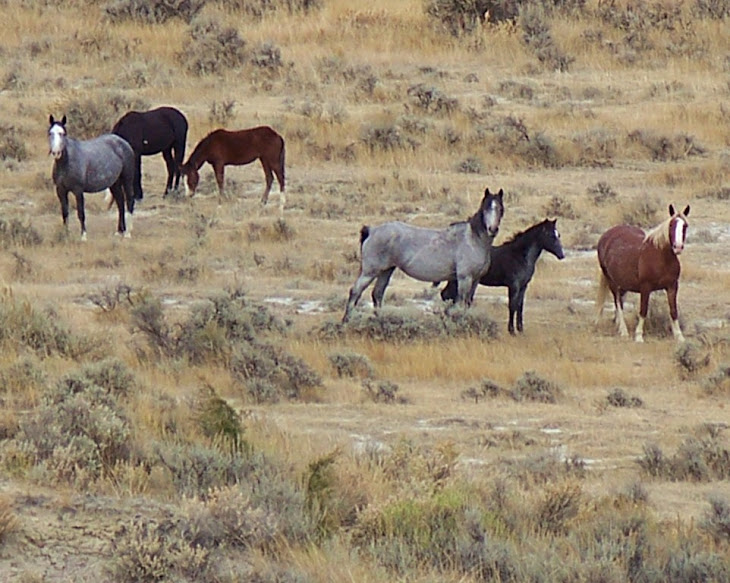
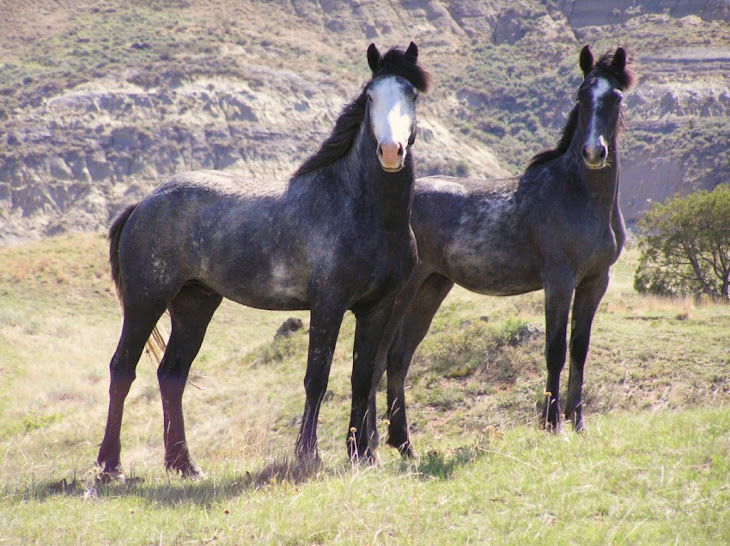









































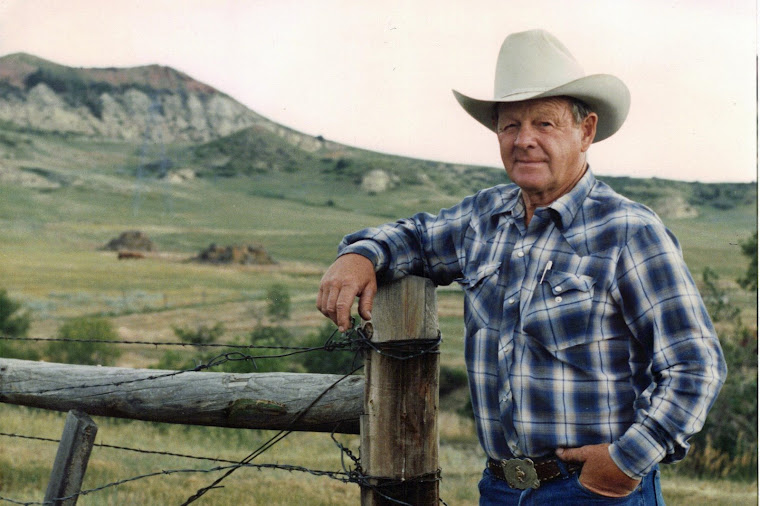
























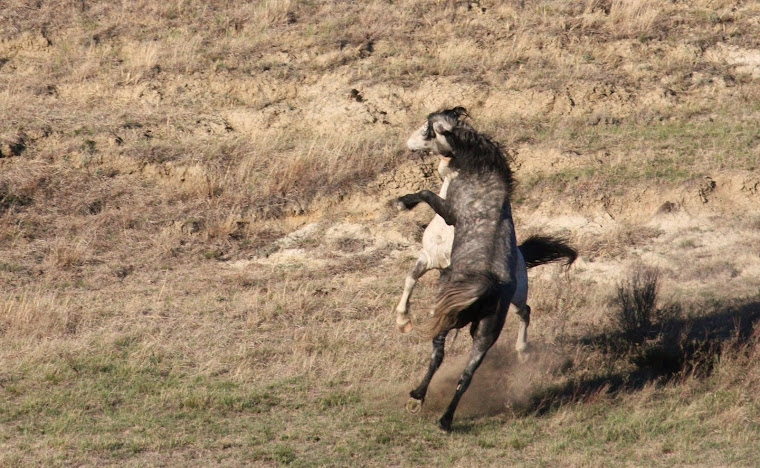













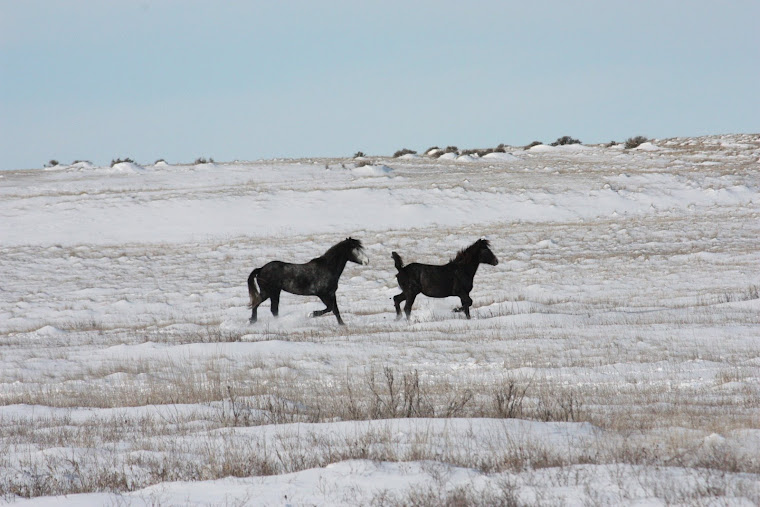
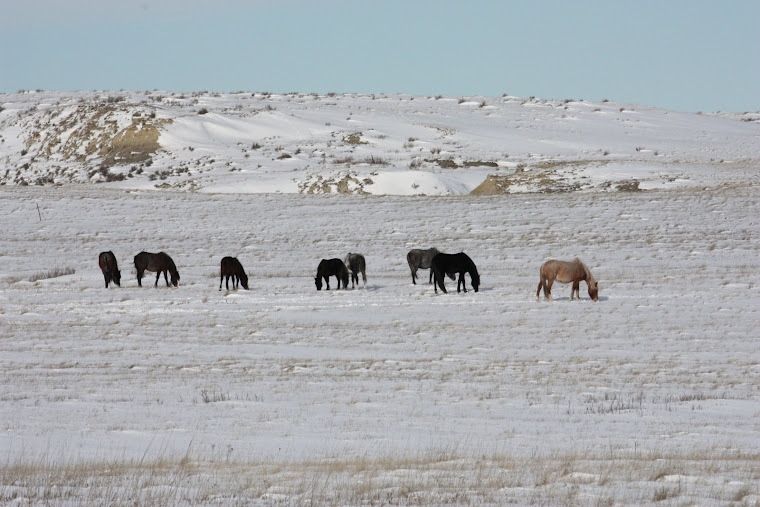
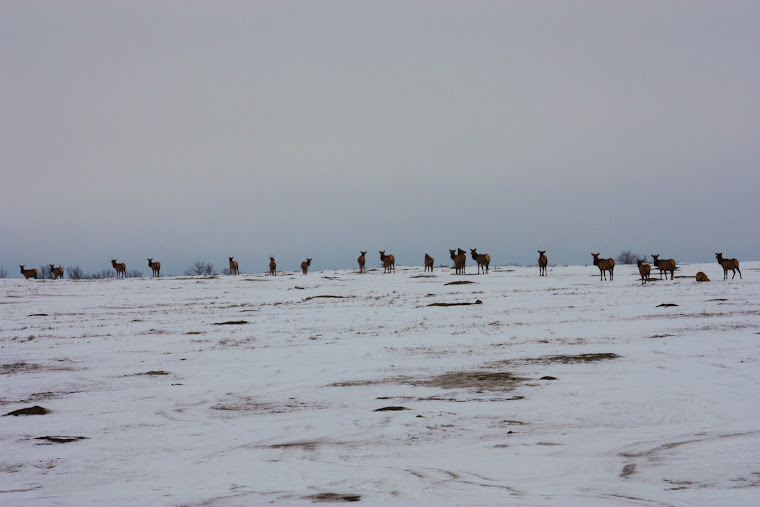
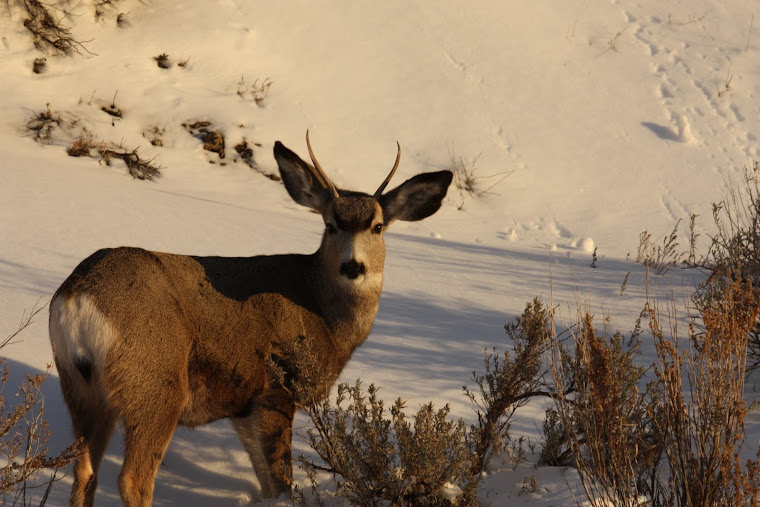




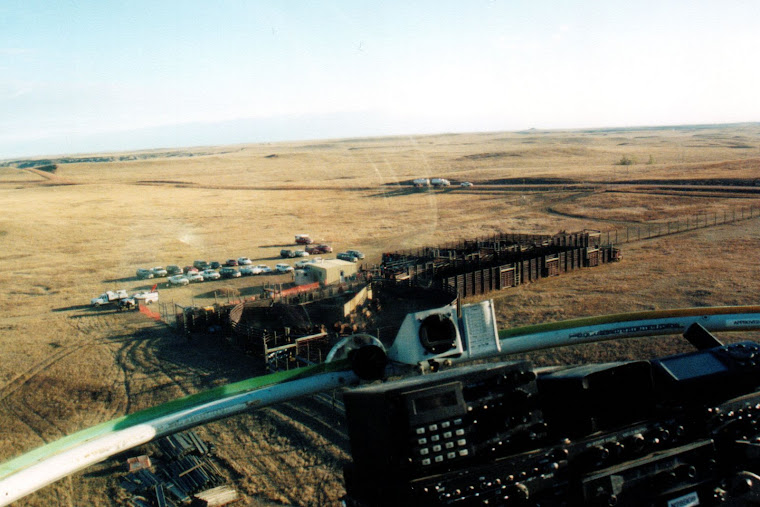
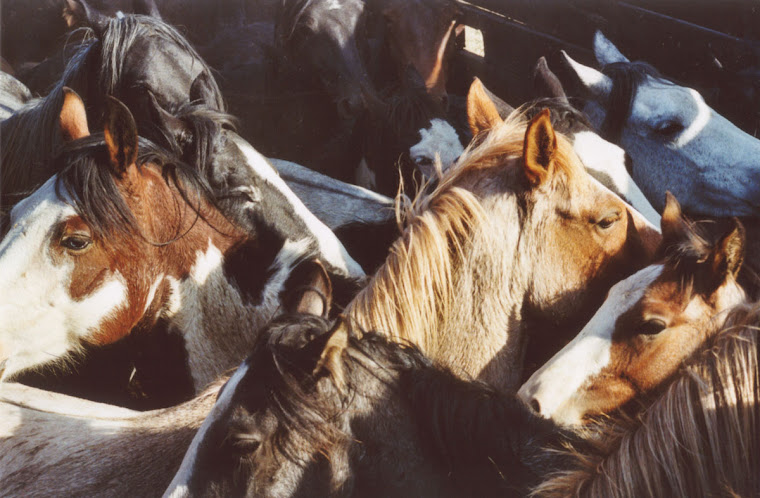
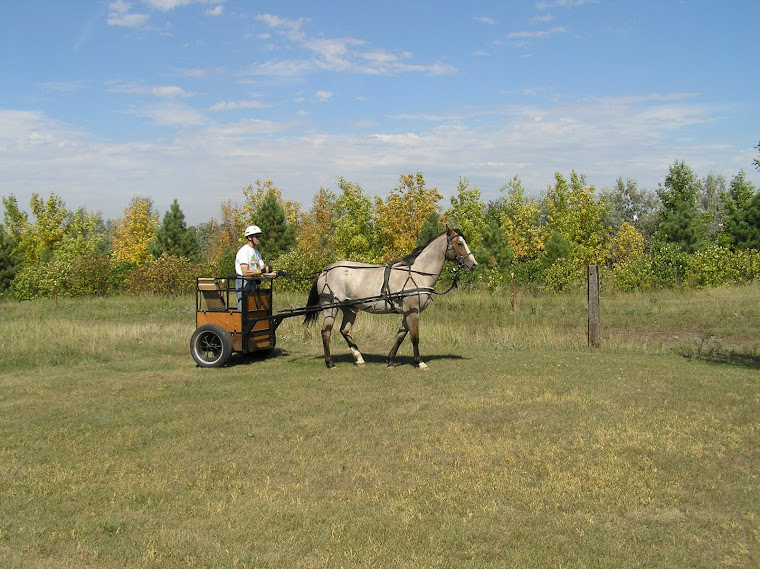
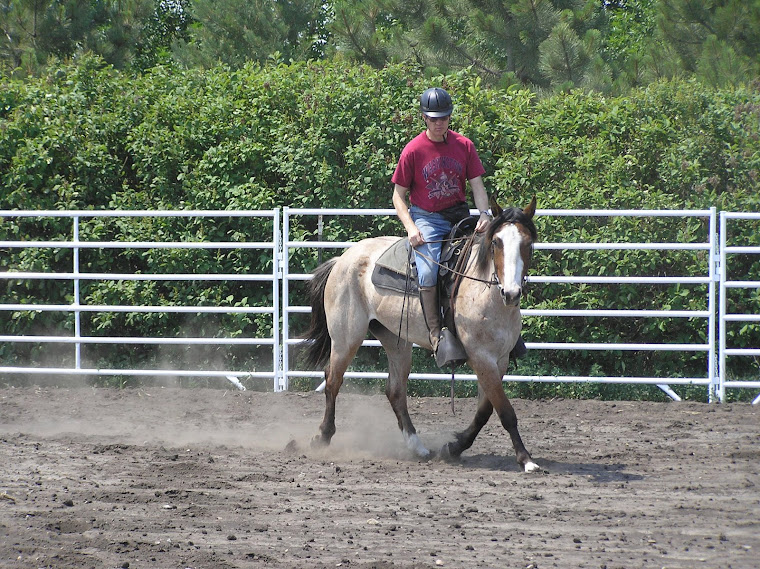

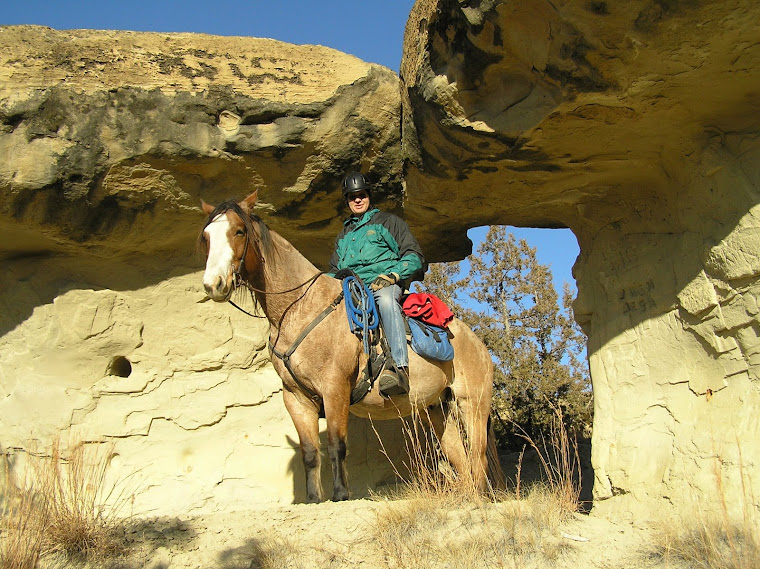



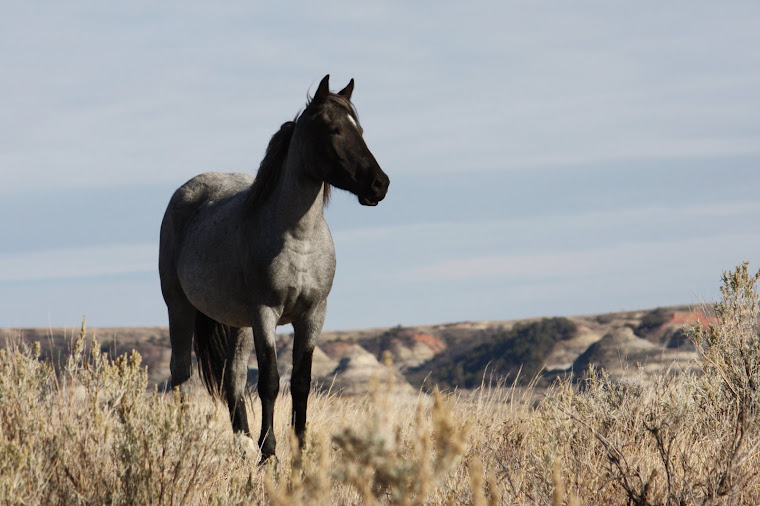


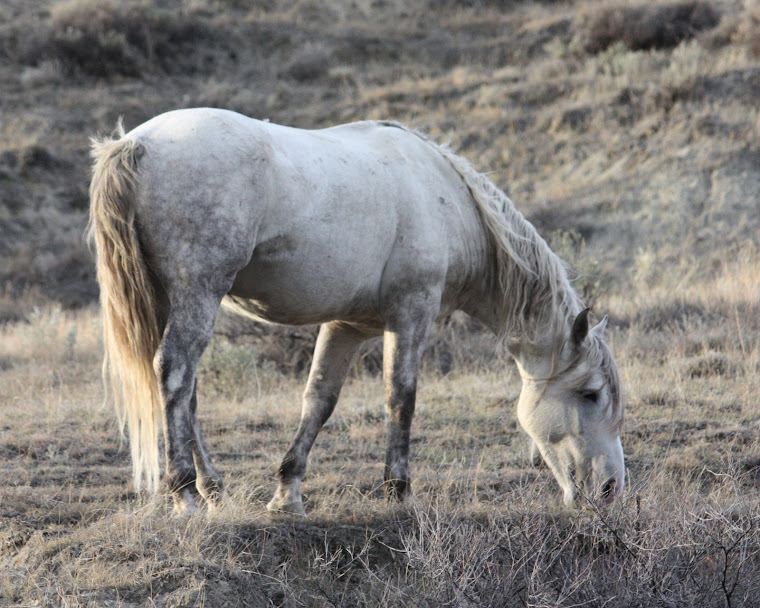
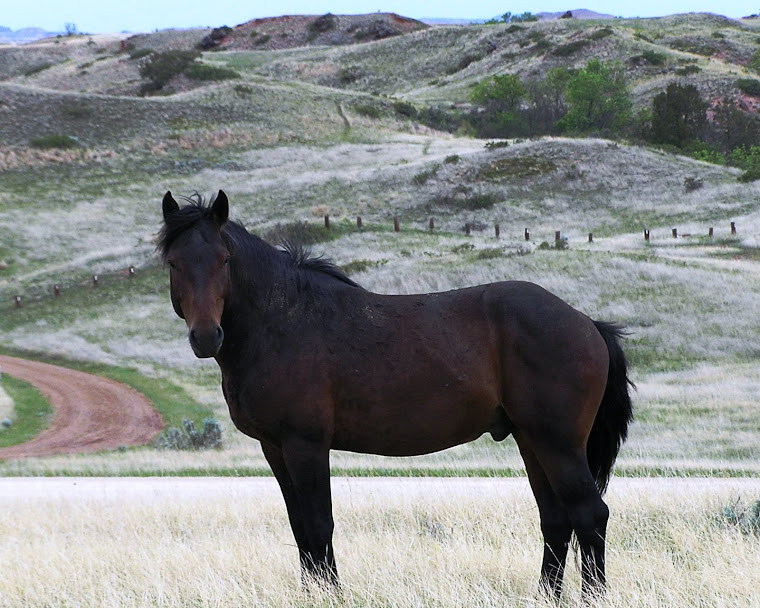

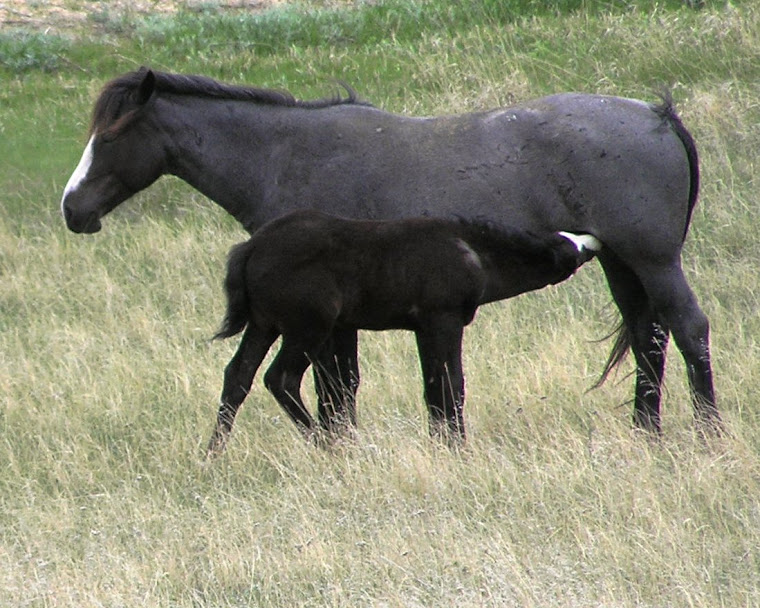

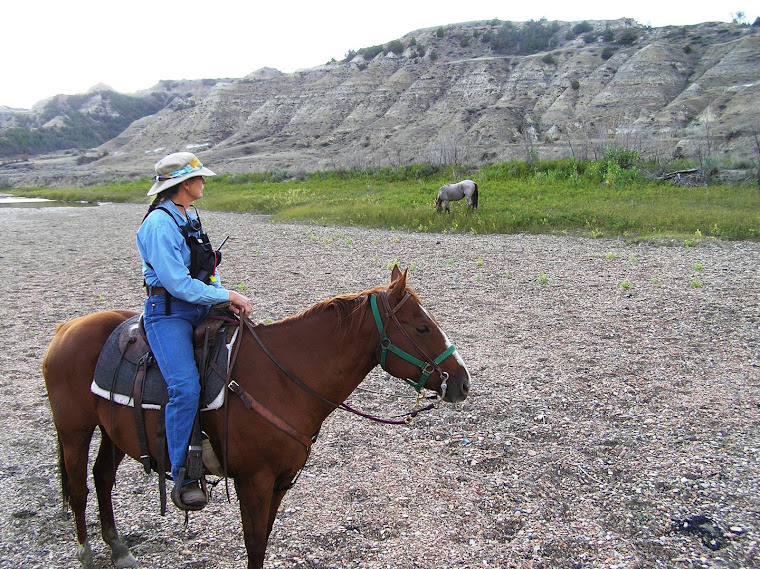
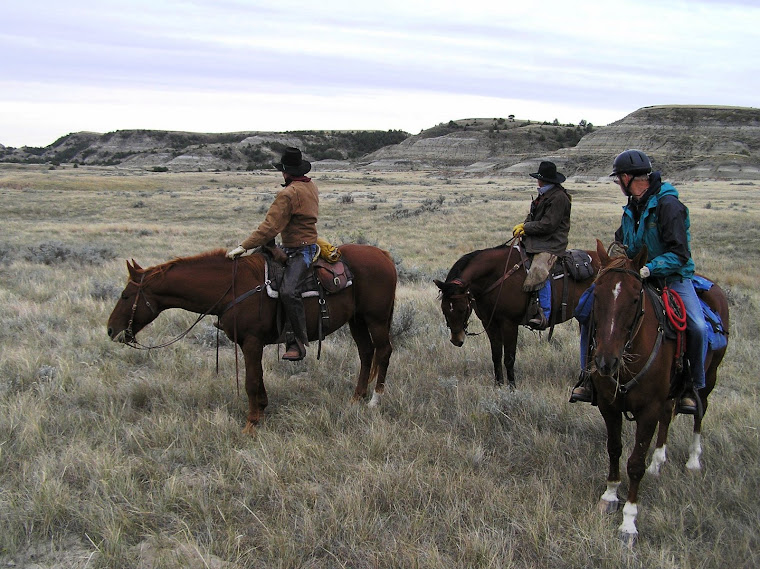
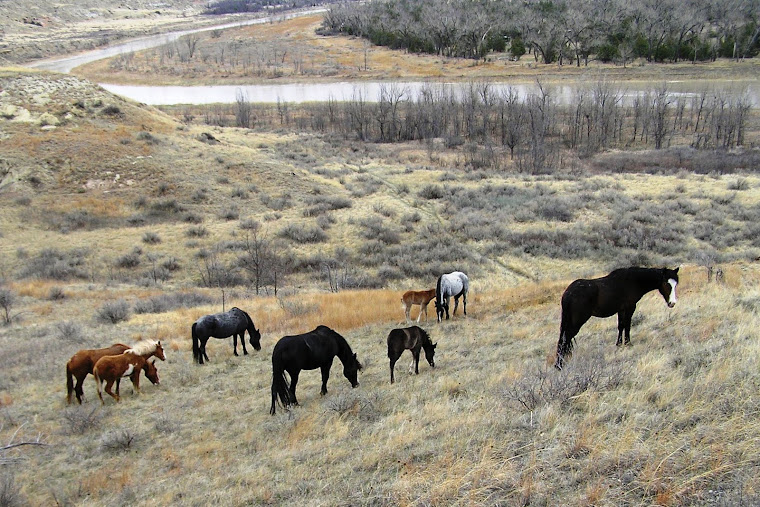
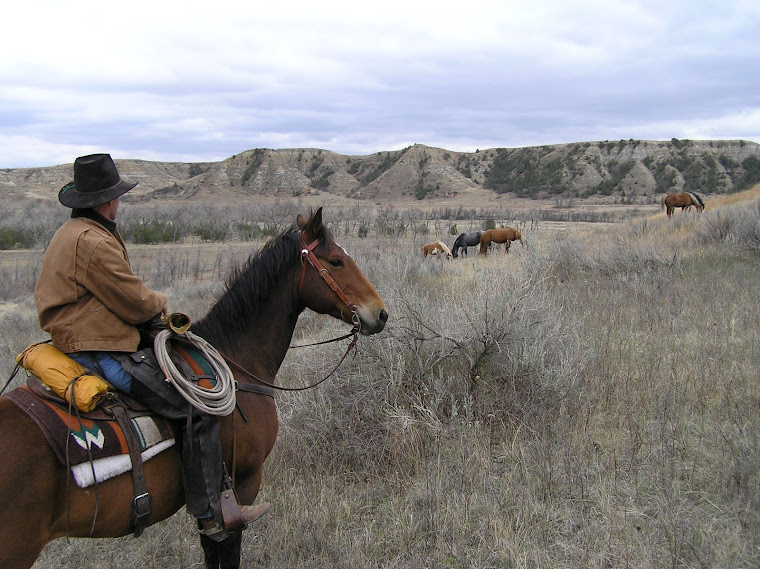

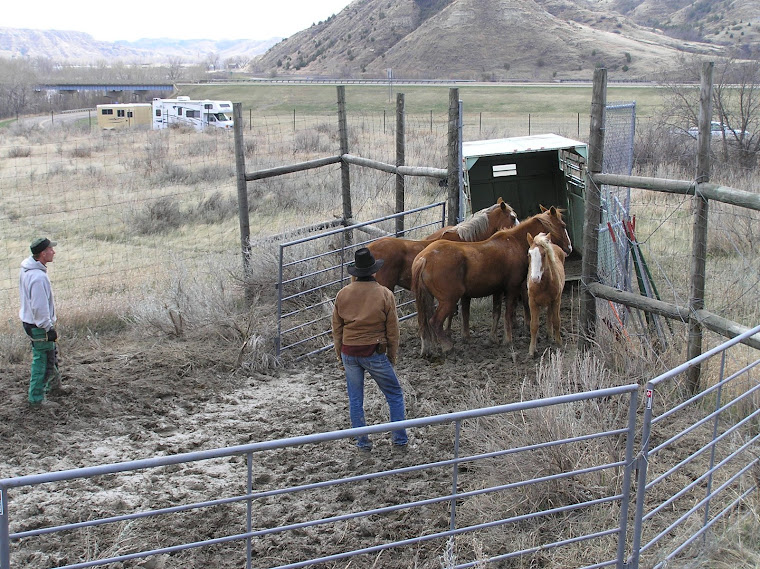
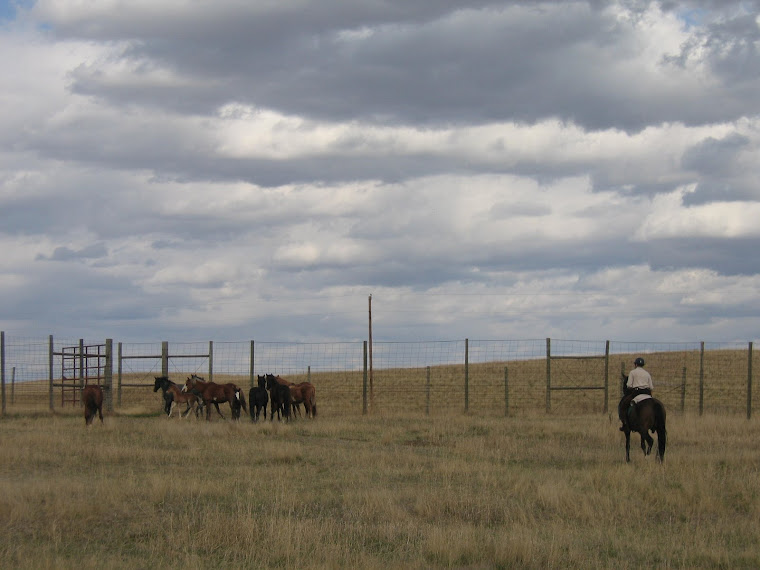
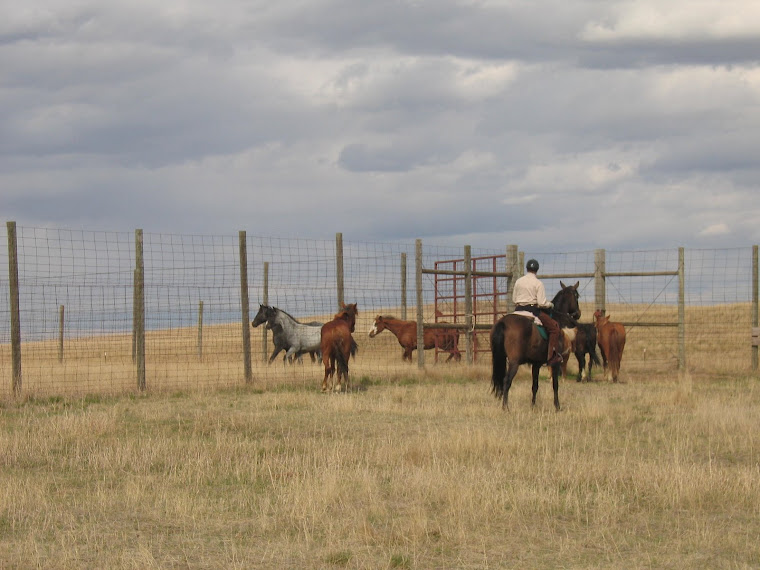
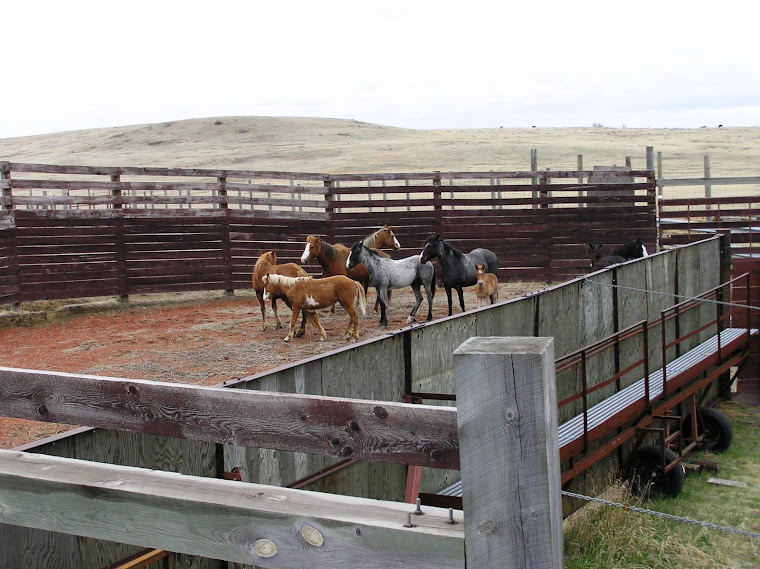


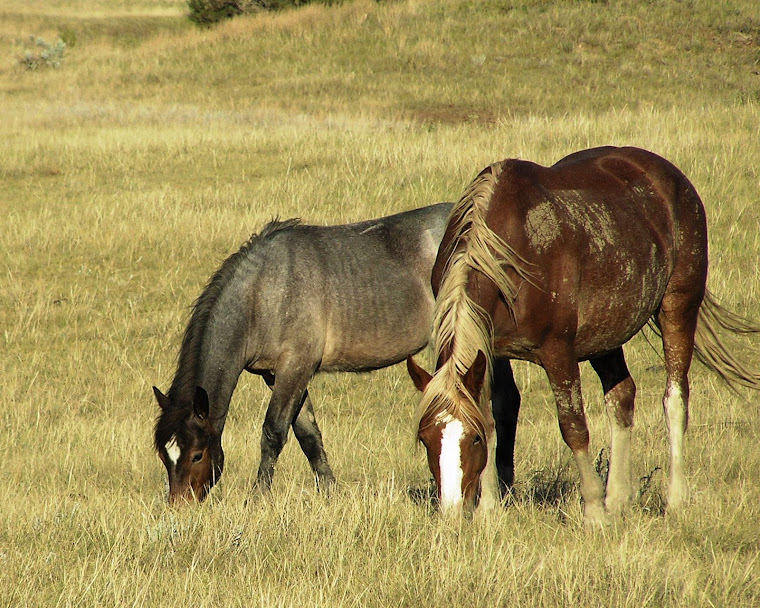

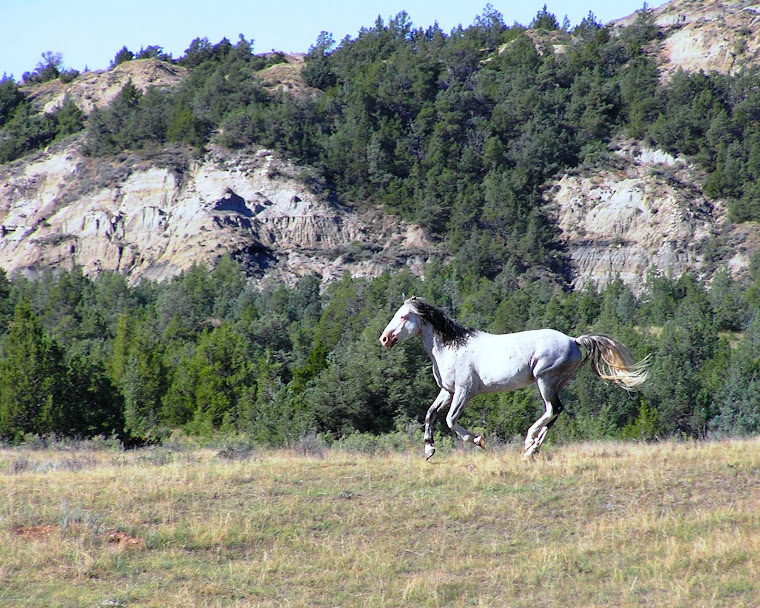
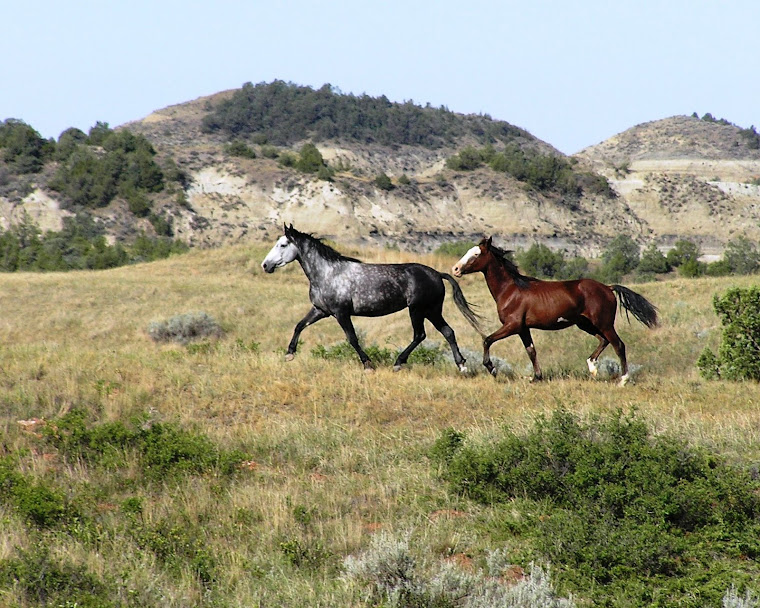
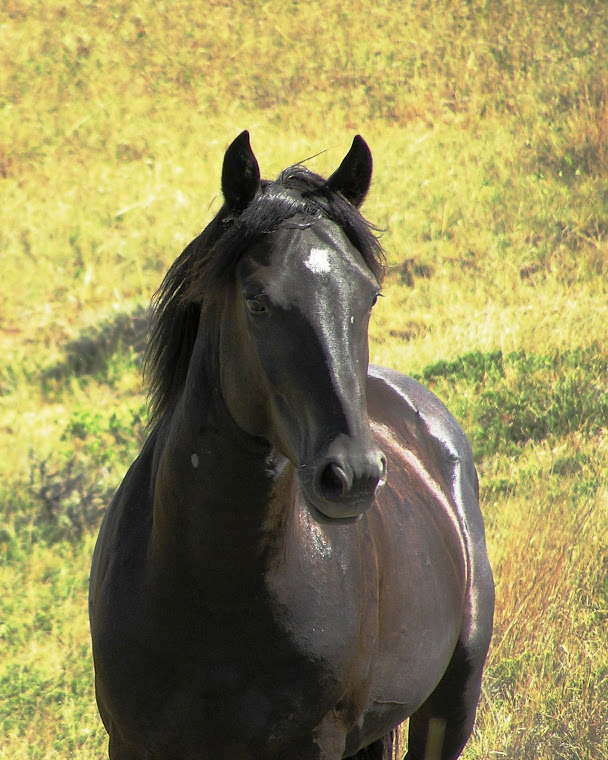

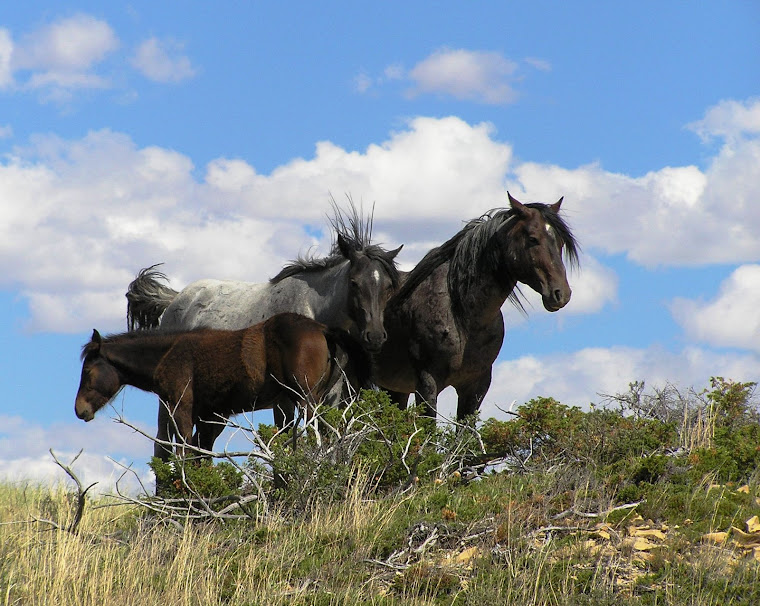



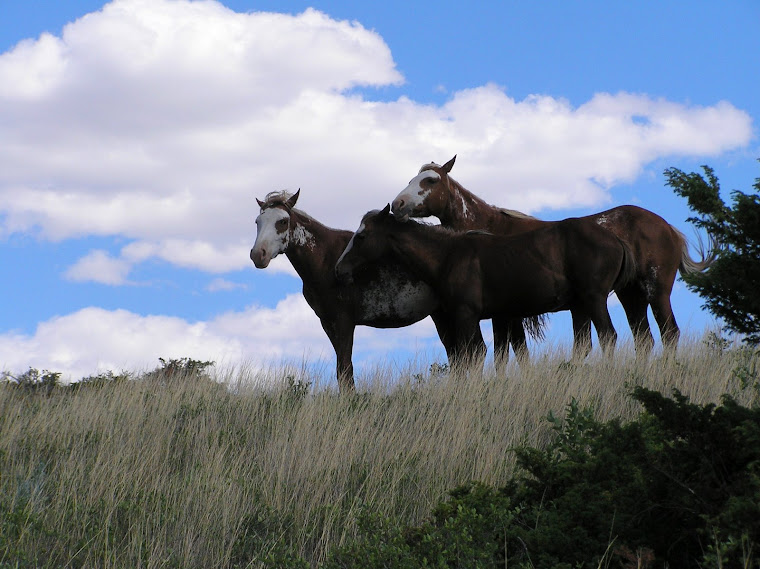


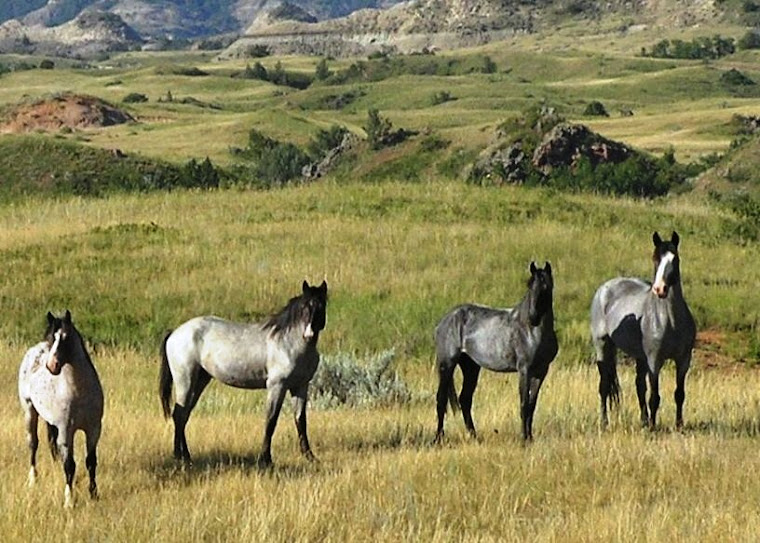
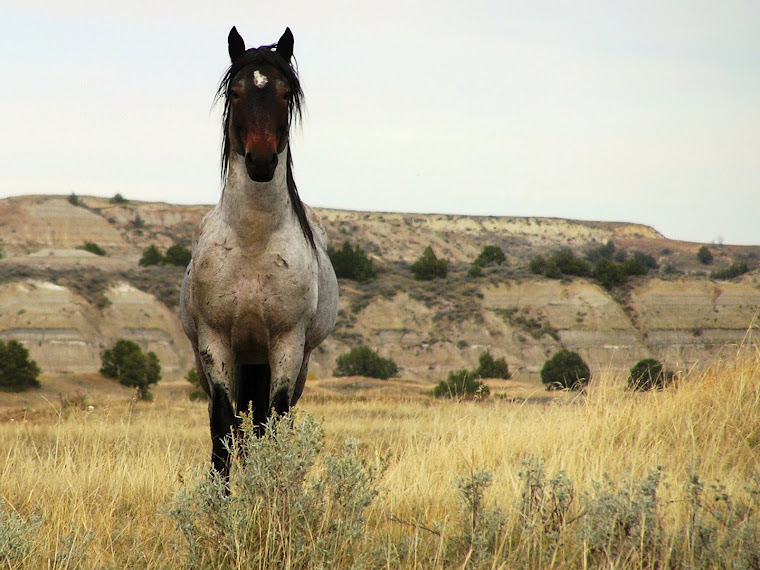
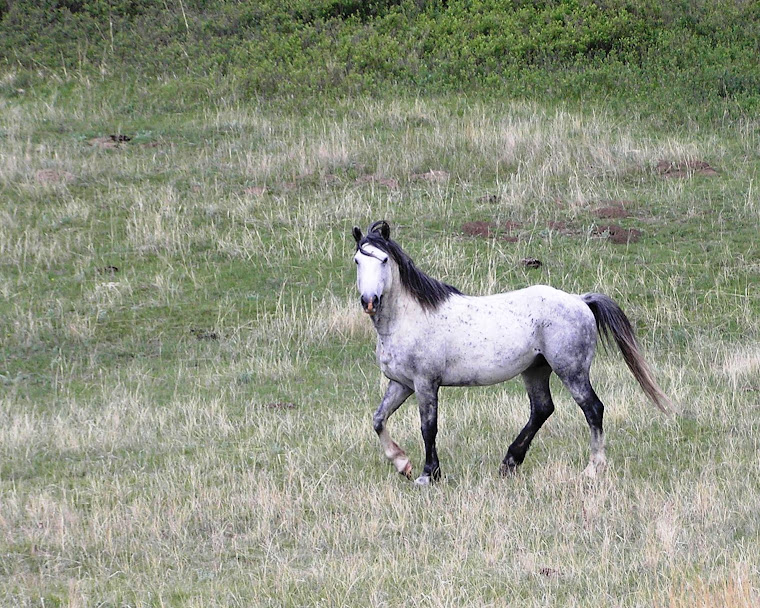

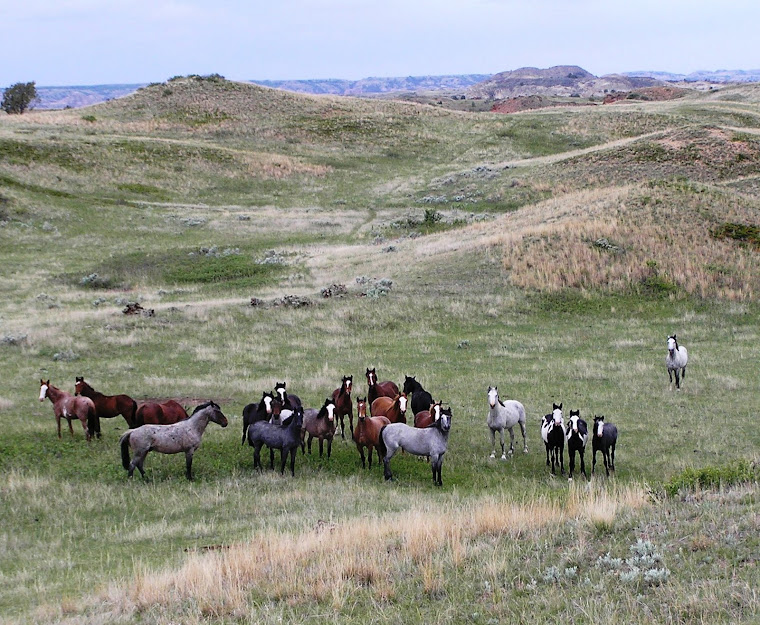
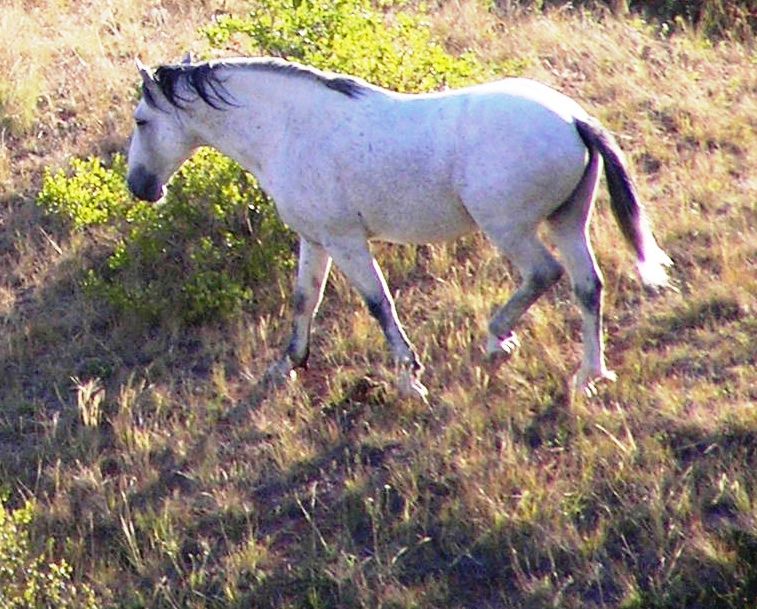
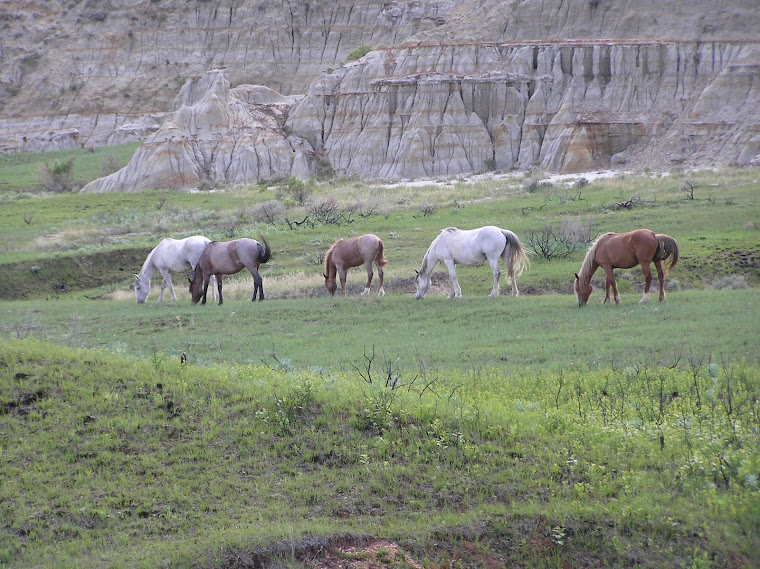
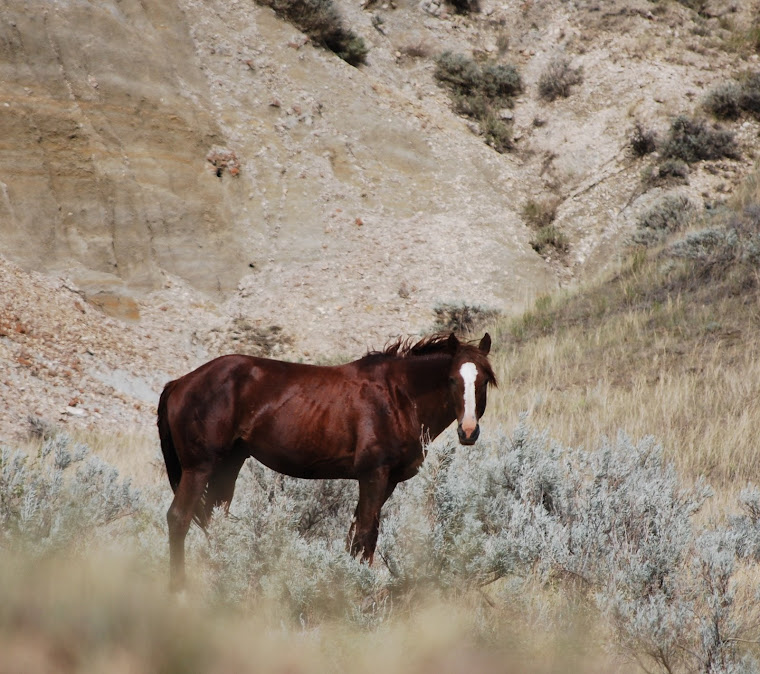

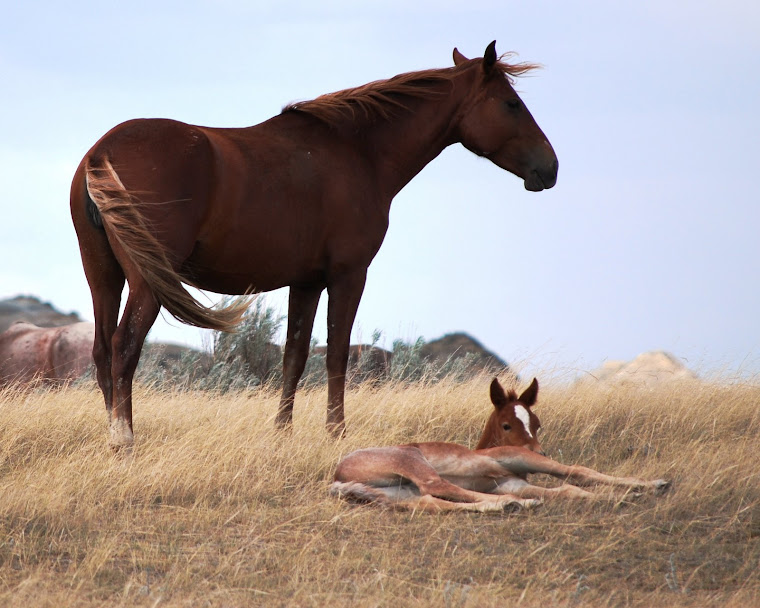
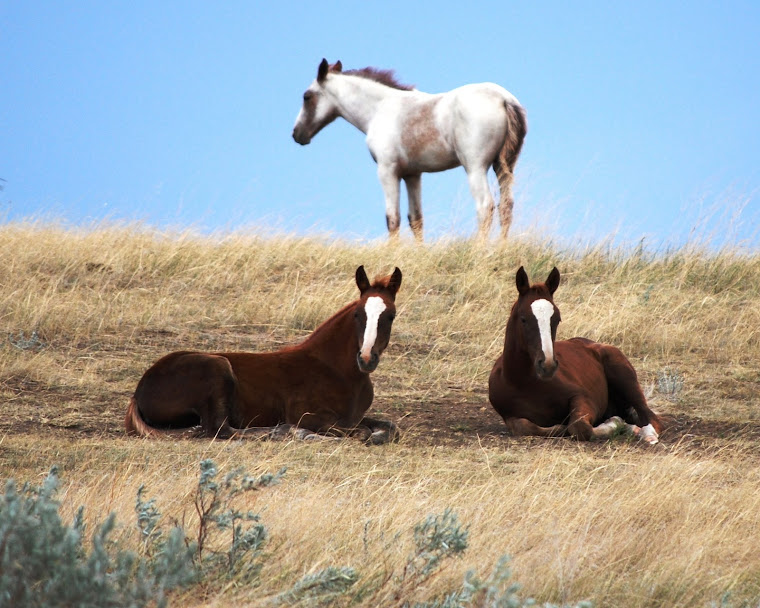
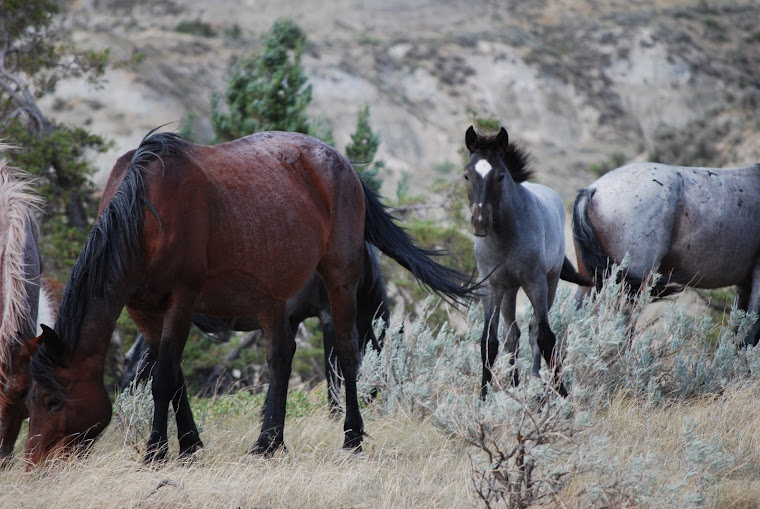

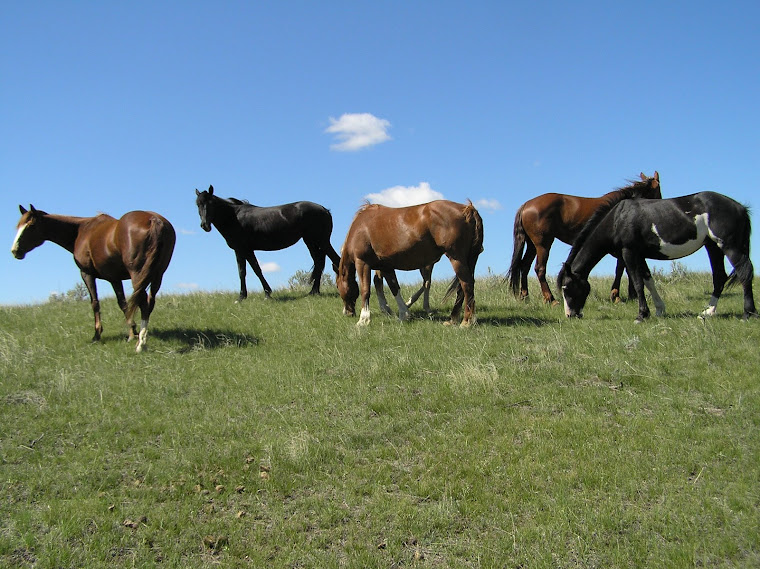
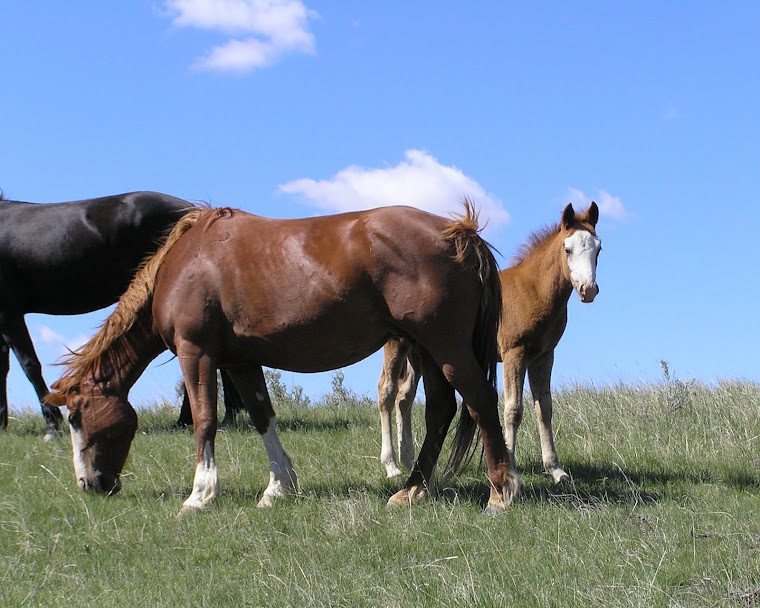

1 comment:
I really enjoyed your writing and photographs. I am going to be in the park this coming week to photograph the horses, if you have any tips or suggestions on location, I would greatly appreciate it.
Linda Gordon
Post a Comment